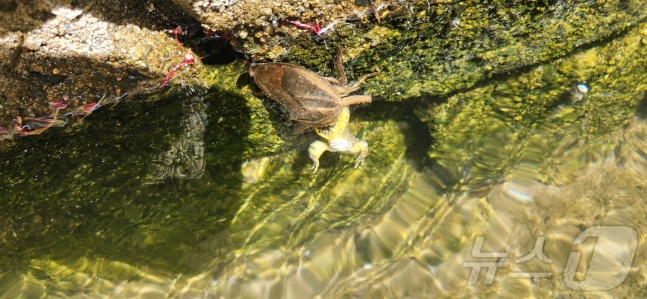National Institute of Biological Resources in Honam Region,

Appearance of a critically endangered wildlife species, II-grade water tiger beetle, found in Jindo. (Provided by the National Institute of Biological Resources in Honam Region) 2024.6.24/News 1,
,
, ‘Jindo, News 1 = The National Institute of Biological Resources in Honam Region under the Ministry of Environment announced on the 24th that they have confirmed the presence of a critically endangered wildlife species, the II-grade water tiger beetle, inhabiting Jin-do County, Jeollanam-do.’,
,
, ‘During the survey and excavation research on terrestrial and coastal biological resources conducted by the Insect Research Team of the Animal Resources Research Department at the National Institute of Biological Resources in Honam Region, one adult water tiger beetle was identified in Jindo.’,
,
, ‘Due to environmental pollution, water tiger beetles have almost disappeared from inland areas and were designated as critically endangered wildlife in 2012.’,
,
, ‘Water tiger beetles are mainly distributed in island areas such as Jeju Island, Ganghwa Island, Baekryeong Island, and Deokjeok Island, with Jin-do, the third largest island in the country, being the first location where their habitat is confirmed.’,
,
, ‘With a maximum body length of up to 7 cm, water tiger beetles are the largest predatory insects in Korea. Known for their giant size and voracious appetite, they are the top predator in aquatic ecosystems, preying on creatures larger than themselves, such as frogs, dragonflies, and even small fish.’,
,
, ‘In particular, by hunting invasive species such as the bullfrog and red-eared slider, areas where water tiger beetles mainly inhabit can be predicted to reduce ecosystem disturbances and maintain a healthy ecological environment.’,
,
, ‘Yoo Kang-yeol, head of the Terrestrial Biology Research Department at the National Institute of Biological Resources in Honam Region, said, “We are continuously confirming the habitats of critically endangered wildlife through biological surveys in island areas” and stated, “Based on this, we will continue research on the sustainable utilization of rich biological resources in terrestrial and coastal areas for biodiversity conservation.”‘,

